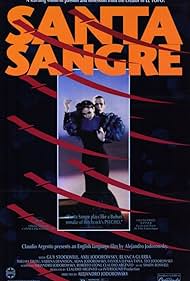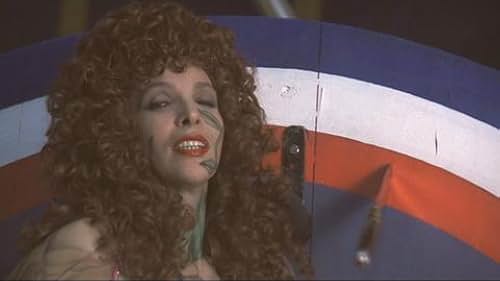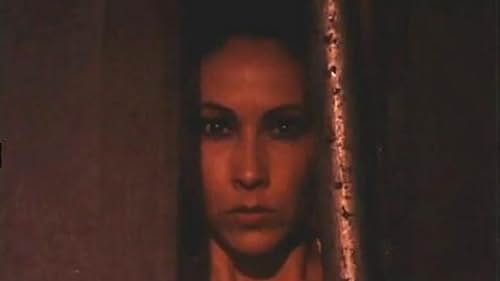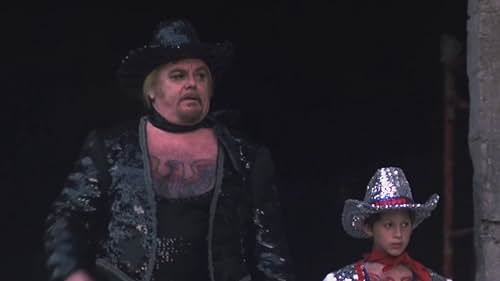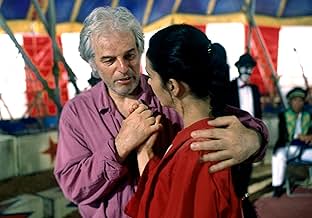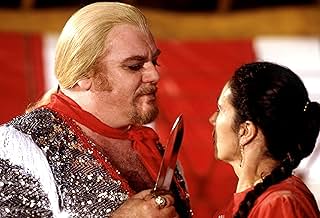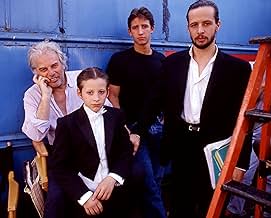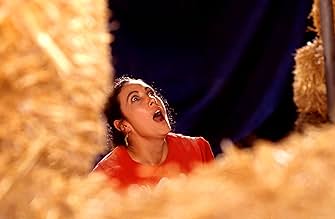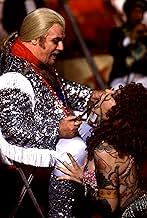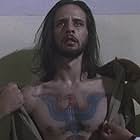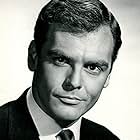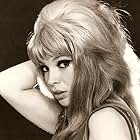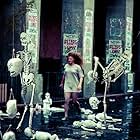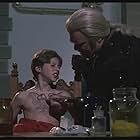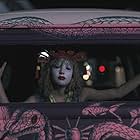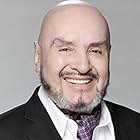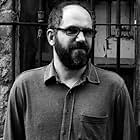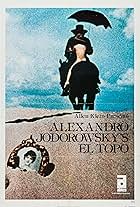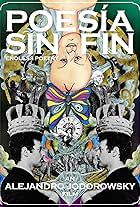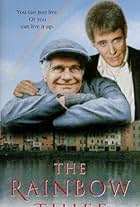A former circus artist escapes from a mental hospital to rejoin his armless mother - the leader of a strange religious cult - and is forced to enact brutal murders in her name as he becomes ... Read allA former circus artist escapes from a mental hospital to rejoin his armless mother - the leader of a strange religious cult - and is forced to enact brutal murders in her name as he becomes "her arms".A former circus artist escapes from a mental hospital to rejoin his armless mother - the leader of a strange religious cult - and is forced to enact brutal murders in her name as he becomes "her arms".
- Awards
- 1 win & 9 nominations
Mary Aranza
- Fat Prostitute
- (as Ma. De Jesus Aranzabal)
Jesús Juárez
- Aladin
- (as Jesus Juarez)
Joaquín García Vargas
- Box-Office Attendant
- (as Borolas)
Edgar E. Jiménez Nava
- Monsignor's Chauffeur
- (as Edgar E. Jimenez Nava)
Storyline
Did you know
- TriviaAlejandro Jodorowsky's sons Adan Jodorowsky & Axel Jodorowsky both play the part of Fenix at different ages.
- GoofsWhen the elephant is dying, all the close-ups of its trunk bleeding show the trunk to be clean. All the long shots of the elephant show it's trunk covered in blood.
- Crazy credits[over the final freeze-frame] I stretch out my hands to thee: my soul thirsts for thee like a parched land ... Teach me the way I should go, for to thee I lift up my soul. - Psalms 143.6, 8
- Alternate versionsThe US has two versions available on video: the R-rated version, which runs about 120 minutes, and the NC-17 version, which is about 123 minutes (the one released uncut in Britain and other European countries). The differences between the two are hardly noticeable except for two scenes - the first scene being the dismemberment of the mother. In the NC-17 version, there are extra cuts of blood and gore spraying on the walls, and then we also see a few extra shots of blood spurting out of the father's neck shortly after he commits suicide (we see this from behind; a startlingly un-explicit shot to be considered NC-17 material). The other scene is even more noticeable. The death of the prostitute is much more explicit in the NC-17 version: we see many shots of her being graphically stabbed in the back and chest with loads of blood literally dumping out of her wounds. Then, we briefly see the knife stab through the back of her neck and poke out the front - all in one explicit shot. Practically the entire scene is missing in the R-rated version.
- SoundtracksCaballo negro
Composed by Dámaso Pérez Prado
Featured review
(translation from Italian)
In these days, Santa Sangre is back on the screens in a copy restored in 4k in the original version for the 30th anniversary of its release. Many have asked me to review it, but I can't do it because, first of all I wrote it together with Alessandro Jodorowsky and therefore it would seem to me not very polite and professional to praise me or to criticize me because then in a possible critical judgment today I could also be very bad towards myself...
Beyond the jokes, what I can do instead it's telling the genesis of the film, without spoiling it and without weaving neither praise nor criticism, but leaving them both to the judgment of the spectators, above all new spectators, because it is a cult movie and has gone through 30 years unscathed.
Even the famous GB magazine Empire has included it among the 500 best films of all time...
Beyond this exaggeration, it can be interesting just how the film was born and meanwhile special thanks goes to Claudio Argento, the "crazy" producer, wonderfully crazy, because he believed in this story and produced it.
The first idea of this film has a distant origin.
I attended university working in the library of a psychiatric hospital and I was in contact with the so-called madness, with mental illness, I saw it up close, I read the medical records, I prepared texts for some degree theses... Obviously I have no competence as a psychologist or as a psychiatrist, however, I also followed humanly life of some patients because I was part of therapy program which taught painting and theatre and also another ergotherapy program, that is, work therapy, which offered to the patients the possibility of doing small jobs allowing them to take off their uniform, because then patients were in uniform. Take off their uniform and attend the library meant that in the eyes of a stranger they were treated like normal people.
During the program I had some patients that apparently were very quiet, and they were also very cultured and prepared. In fact, this experience made me understand that schizophrenia is often proper a "degeneration of intelligence", in fact, very often schizophrenics are very clever, very sensitive and very attentive.
One of these patients, who worked with me because he knew 3 or 4 languages so he could help me sort the books, because the library had 50,000 volumes of all types and ages, one day started looking sideways and saying: "... 'shut up ...' shut up ..." The third time I asked him what happened and he answered me calmly with his calm blue eyes: "No, nothing, I have a voice that tells me to kill you, but don't worry because I love you. " I was a little uncomfortable, but he reassured me: "No, no, don't worry, I love you, I don't listen to it... " Continuing to stare at me with his blue eyes and I was, as far as I could be, calm. The library was very extensive because there were five very large rooms for the 50,000 volumes and it was me and him alone, isolated on a high floor of this immense palace. And I trusted. I trusted his blue eyes, I trusted him his sincere way of telling me "I love you".
Probably this episode, like a small seed, has yielded within my psychology, giving me a sense of confidence, giving me a sense of equality and above all a sense of brotherhood even with mental distress. I found Abel in what might have seemed Cain and this fact so ancestral and so mythical has yielded within me and it is probably the origin of Santa Sangre because over time, I conceived a story in which even the worst demon actually can't forget he is an angel.
Whoever saw Santa Sangre knows that the character I wrote together with Alejandro Jodorowsky is a serial killer, but every time he kills you feel sorry for him that is you are sorry more for him than for the victim just to completely overturn the concept of the brute, of the violent, of the monster, but returning almost to the Latin root 'monstrum', that is, something to see, a curious thing to discover. Because the human soul is an infinite gallery of typologies, it is a very deep mine in which, as the famous verses of De Andrè say: "... nothing comes from diamonds, but from the manure the flowers are born... " That is, there is in the depths of the soul, even the most horrendous soul, this incredible ability, this little spark...
Over time I have developed a story that I told Claudio Argento because it was a time when we worked together. Claudio understood this story and indeed he even added to it things he thought and together we decided to present it to the director who seemed the most suitable to represent it that is Alejandro Jodorowsky.
Jodorowsky for about ten years seemed to have disappeared from the international scenes, but Claudio with great diligence and a lot of skill found him and talked to his agent. Alejandro made an appointment in Paris, but he wanted to meet only me. We didn't understand why, but he said: "I want to meet who wrote this story"
I went to meet Alejandro in Paris and in the entrance hall of his agent's building, while I was going to take the elevator, an elegant man has sprung from the shadows, curious, particular, completely dressed in purple: he also had purple shoes, a purple shirt, the purple tie, he was completely purple. And he said to me: "Oui, c'est moi ..." So, I saw Alejandro for the first time. He didn't want to go to the agent because it was a place of merchants, instead he told me: "Let's go to a bar, let's look at each other and talk"
The first thing he asked me was:
"When did you write this story?"
"About a year ago ..."
"When exactly?"
"I do not remember..."
Then, I remembered that my daughter had a fever and I was telling her stories, then I went to my study, an idea had occurred to me and I started to throw that one down which was the first nucleus of Santa Sangre. Then I said:
"It should have been March 29."
"What time did you write it?"
"Around half past one or two in the morning ..."
"I knew it...
...that night I went to sleep early and the angel of stories has passed over Paris to bring me a story, saw that I slept and continued to Rome, saw that you were awake and gave you the story. But the story was mine and you are a thief! "
"But Alejandro, I invented it ..."
"No, you are a thief, 'tu es un voleur' ..."
And since then he called me 'ce voleur là', 'that thief there' referring to me.
This is a very beautiful story because you can understand how every artist in reality has the ability, when he likes something, to take it, to feel it and to think that he really conceived it.
Then, Alejandro developed this story with his imagination and his art, also telling me an episode occurred in Mexico City which in some respects had similar characteristics and together we wrote the script by which he then made the film that we all know.
- RobertoLeoni
- Nov 23, 2019
- Permalink
- How long is Santa Sangre?Powered by Alexa
Details
Box office
- Budget
- $787,000 (estimated)
- Runtime2 hours 3 minutes
- Color
- Sound mix
- Aspect ratio
- 1.85 : 1
Contribute to this page
Suggest an edit or add missing content

